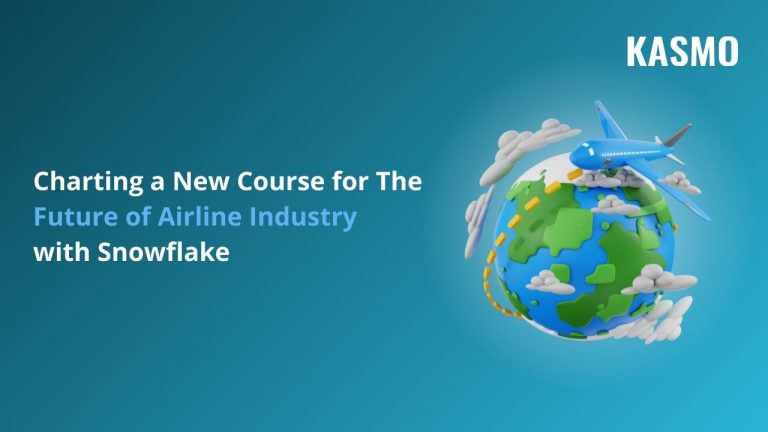Introduction
According to research by IATA, in 2025:
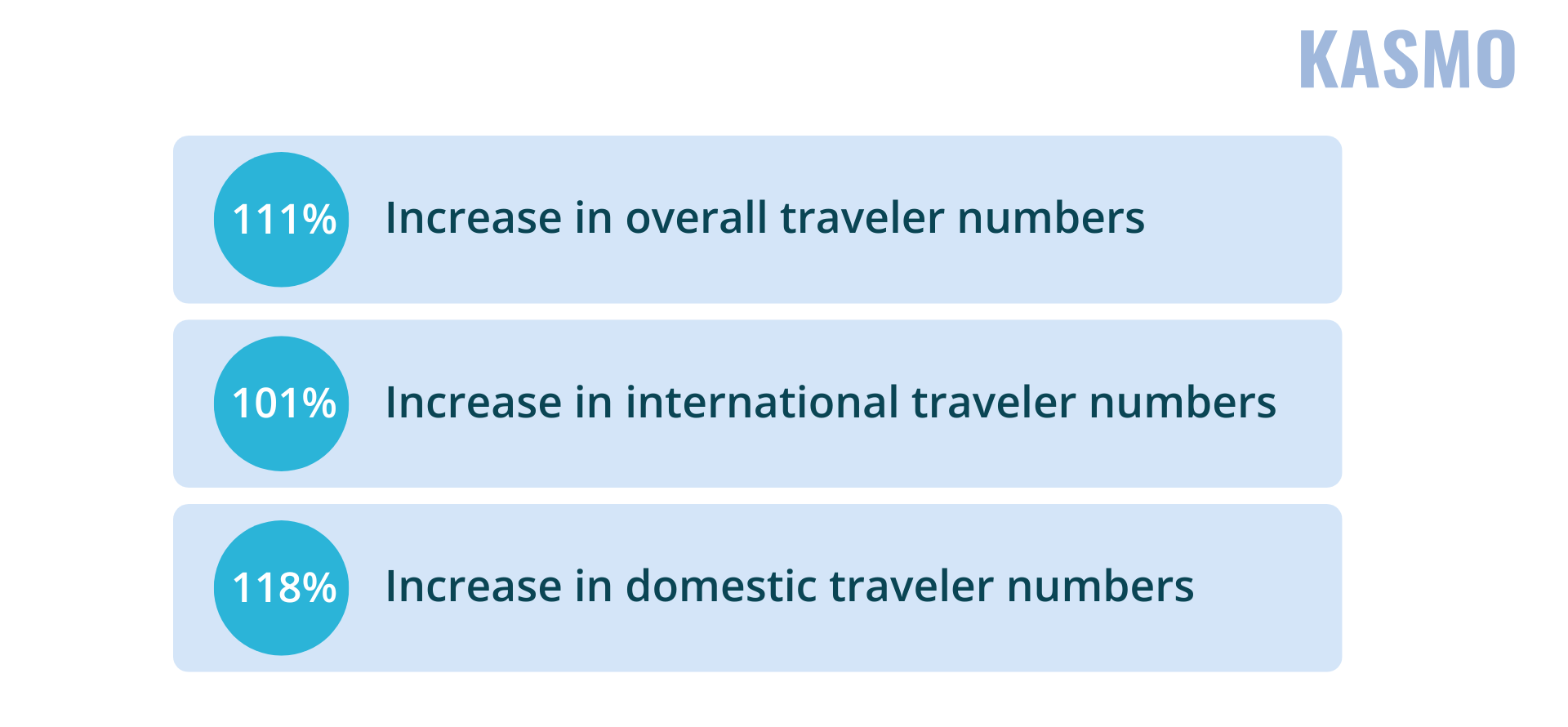
These overwhelming increase in travelers indicates a positive outcome for the airline industry after the pandemic. Since COVID-19, airports and airline companies had to pivot quickly to meet the changing needs of travelers. What used to be simple transit hubs are now bustling environments designed to enhance the travel experience. These new additions are set to transform the future of airline industry and push it more towards innovating experiences that make the life of travelers easy.
Now airports offer everything- from retail stores and restaurants to relaxing lounges. However, the growing pressure on airline companies and airports are to accommodate increasing passenger volumes.
Passengers not only look for convenience in terms of amenities at airports but also, they want seamless technology and customer service. In a time when every minute counts, passengers are demanding faster, more streamlined travel experiences, and airlines must respond accordingly.
Airports Are Not Your Regular Retail Shops: They Are an Experience Center
Airports are no longer just places to catch a flight. They are also destinations offering travelers a wide variety of services and amenities. However, as the number of passengers grows, so does the demand for efficiency.
In fact, a major part of the airport passenger’s experience depends on the quality of products sold at the airports and how efficiently the sales reps are providing their services to them. Passengers want to get through security, purchase items, and access services quickly and with minimal friction.
Airports today are a blend of convenience and comfort, with retail stores, restaurants, and lounges serving as key features. Whether it’s a quick bite before a flight, purchasing last-minute items, or enjoying some downtime in a lounge, airports strive to make the journey easier for travelers.
However, the rapid increase in passenger traffic has led to longer wait times, especially at checkouts or when accessing lounges. This calls for re-evaluating airport services and technologies used to ensure a seamless airport experience.
How Can a Detour from the Norm Transform the Future of Airline Industry?
The pandemic caused significant disruptions to the airline industry, forcing some airline carriers to restructure in order to stay afloat. While some airlines benefitted from government aided programs, others took the opportunity to rework their operations for greater efficiency.
Airlines that made strategic decisions pre-COVID, including restructuring their cost bases, are now emerging from the crisis in a stronger position, ready to compete in a post-pandemic world.
To ensure long-term success, airlines must focus on improving their business models, investing in new technologies and enhancing the customer experience to differentiate themselves from their competitors.
So, how can industry leaders elevate the future of airline industry?
Investing in IT and Digitization
To stay competitive airlines must increase their investment in IT and digital solutions to improve customer experience, streamline operations, and leverage data for better decision-making.
Embracing Automation and Customer Experience
Travelers expect seamless experiences from check-in to boarding. Airlines can improve efficiency and passenger satisfaction by embracing automation and digital tools. Automated check-ins, baggage handling, and security processes can reduce wait times, and personalized services can enhance the overall airport customer experience.
Leveraging Data for Better Decision-Making
The airline industry can harness data and predictive analytics to optimize operations, forecast demand, and make data-driven decisions. By leveraging real-time data, airlines can adapt quickly to fluctuations in passenger demand, optimize pricing strategies, and improve fleet management, resulting in greater operational efficiency and profitability.
Understanding Changing International Relations
Geopolitical changes will continue to impact global travel. Any sudden disruption in international political relations could alter air travel routes and policies. Airlines will need to navigate these changes carefully to maintain a competitive edge in international markets.
International and national Governments will continue to play a key role in the airline industry, both in terms of regulation and infrastructure investment. Staying at par with regulatory policies and compliance will help airline leaders stay relevant in this competitive industry.
Utilizing Data and Leveraging AI
Data and AI are transforming the future of airline industry. By leveraging data, predictive analytics, and real-time information, airlines can improve operational decision-making, enhance the passenger experience, and respond more proactively rather than reactively to changes in customer demand.
How Snowflake Can Create a Different Runway for The Future of Airline Industry?
As airlines look to remain competitive in this dynamic market, enhance airport passenger experience, and streamline operations, adopting a data-driven approach is becoming increasingly crucial. One platform that is enabling this transformation is Snowflake — a unified data cloud platform that empowers businesses to manage, share, and analyze data in real time.
Streamlining Data Supply Chains for Seamless Operations
The airline industry is notoriously complex, with a web of interconnected systems spanning flight schedules, ticketing, baggage handling, maintenance, customer service, and more. Efficient operations rely on seamless coordination across all of these functions. However, disparate data silos, legacy systems, and disconnected teams often hinder collaboration and slow down decision-making.
Snowflake offers a unified data platform that breaks down these silos, enabling airlines to share data effortlessly across departments and systems. By centralizing data sources and making them accessible to all relevant teams in real-time, Snowflake facilitates smoother operations, faster decision-making, and enhanced collaboration. Airlines can use this centralized data to:
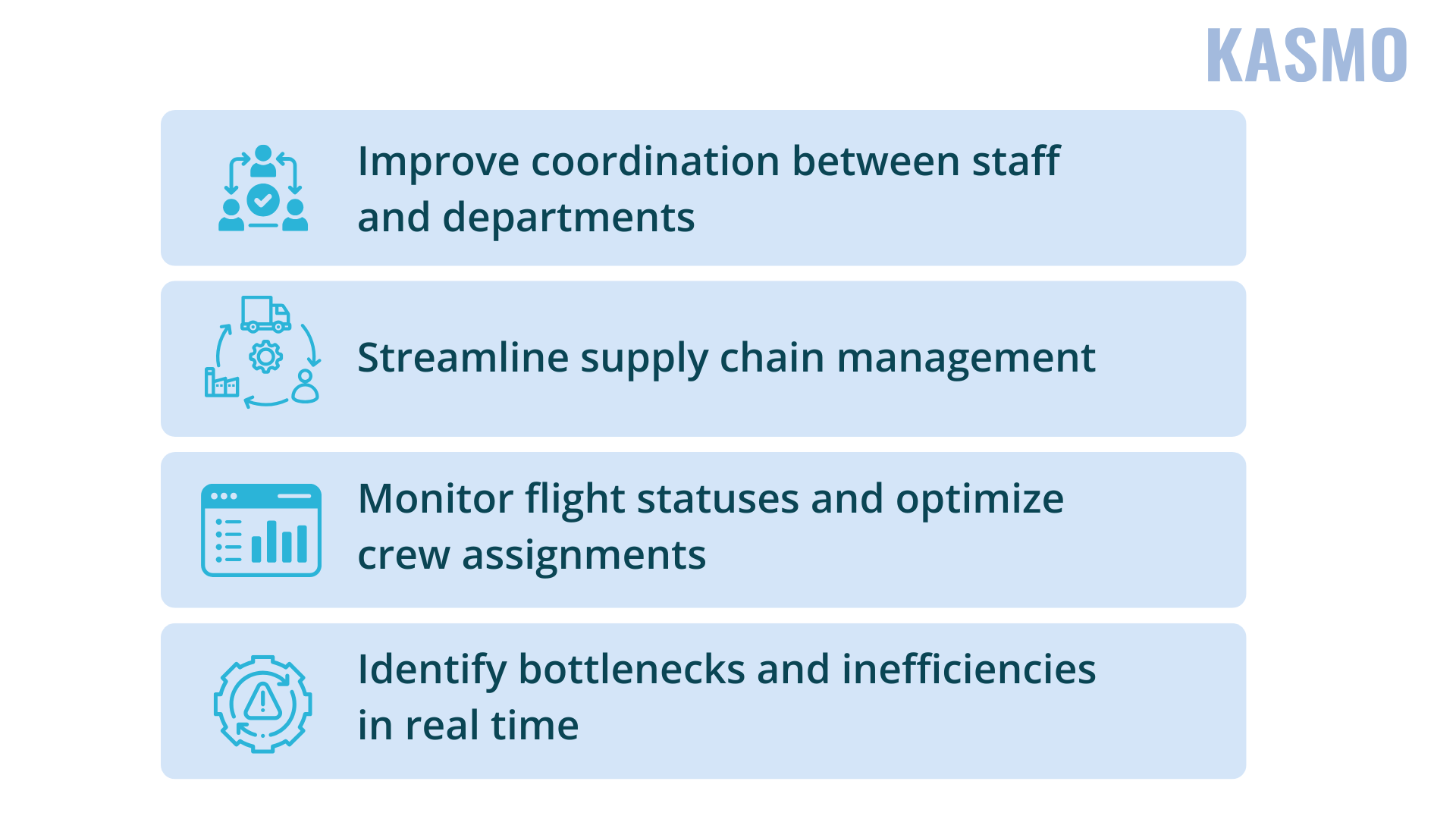
With a single source of truth, airlines can improve operational efficiency and reduce costs. This helps them respond more quickly to disruptions, such as weather-related issues, leading to better customer service and more agile operations.
Optimizing Demand Forecasting
Accurate demand forecasting is essential for any airline, as it helps determine flight schedules, seat pricing, and resource allocation. However, traditional forecasting methods are often reactive, relying on historical data and rigid algorithms.
Travel patterns can change rapidly due to external factors like pandemics, geopolitical shifts, or economic fluctuations. This requires airlines to have better and data-driven forecasting models.
Snowflake enables airlines to use predictive analytics and machine learning (ML) to enhance demand forecasting. By analyzing vast amounts of data, including historical trends, customer behavior, weather patterns, and economic indicators, Snowflake’s AI-powered platform can provide more accurate and real-time demand predictions. This enables airlines to:
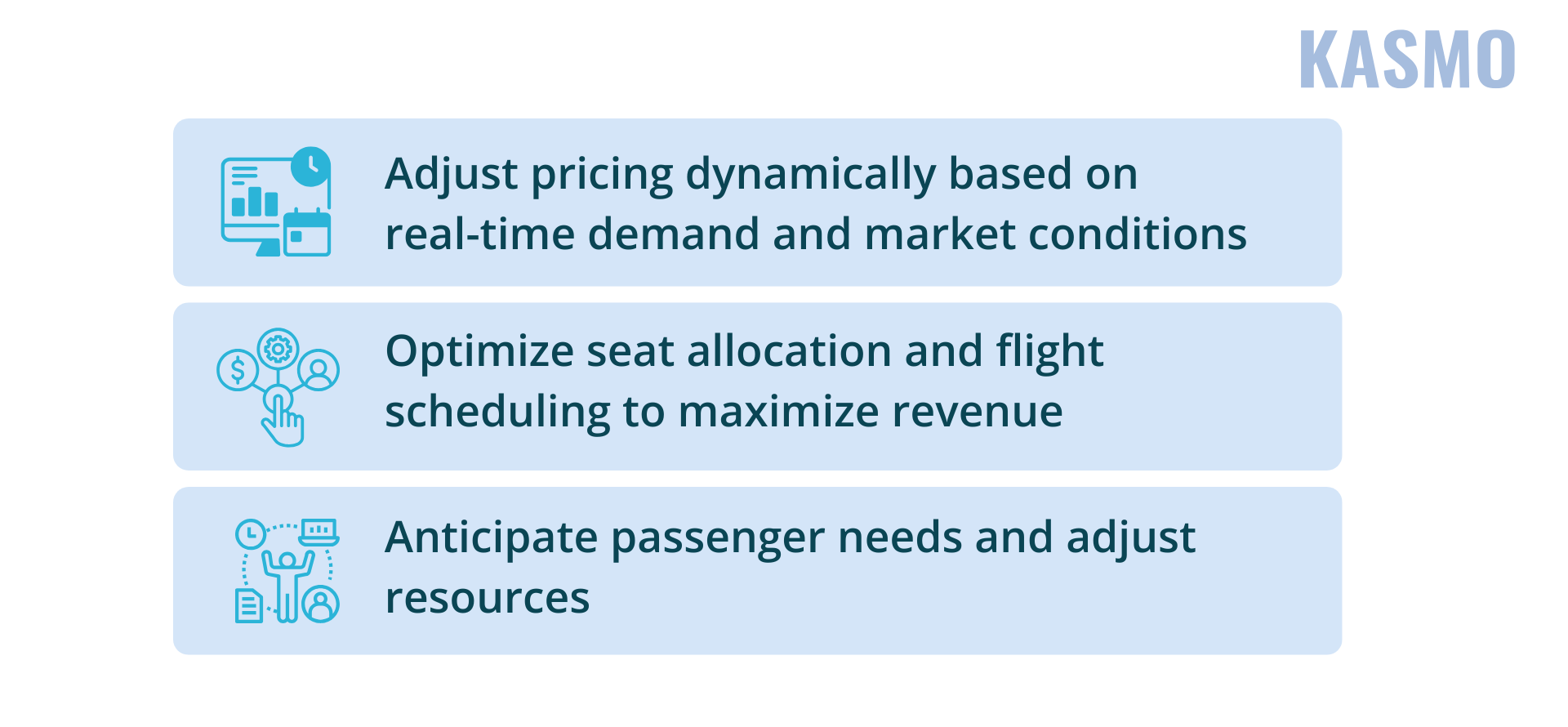
Enhancing Airport Passenger Experience with Personalization
Providing a personalized and seamless travel experience is key while mapping out a better future of airline industry. Passengers expect tailored offers, easy booking processes, and timely updates on flight statuses or changes. Snowflake enables airlines to deliver highly personalized experiences by integrating customer data across various touchpoints — from the initial booking to post-flight communications.
Using Snowflake’s platform, airlines can create a 360-degree view of each passenger, combining data from booking systems, loyalty programs, customer interactions, social media, and more. This enables airlines to offer personalized services such as:
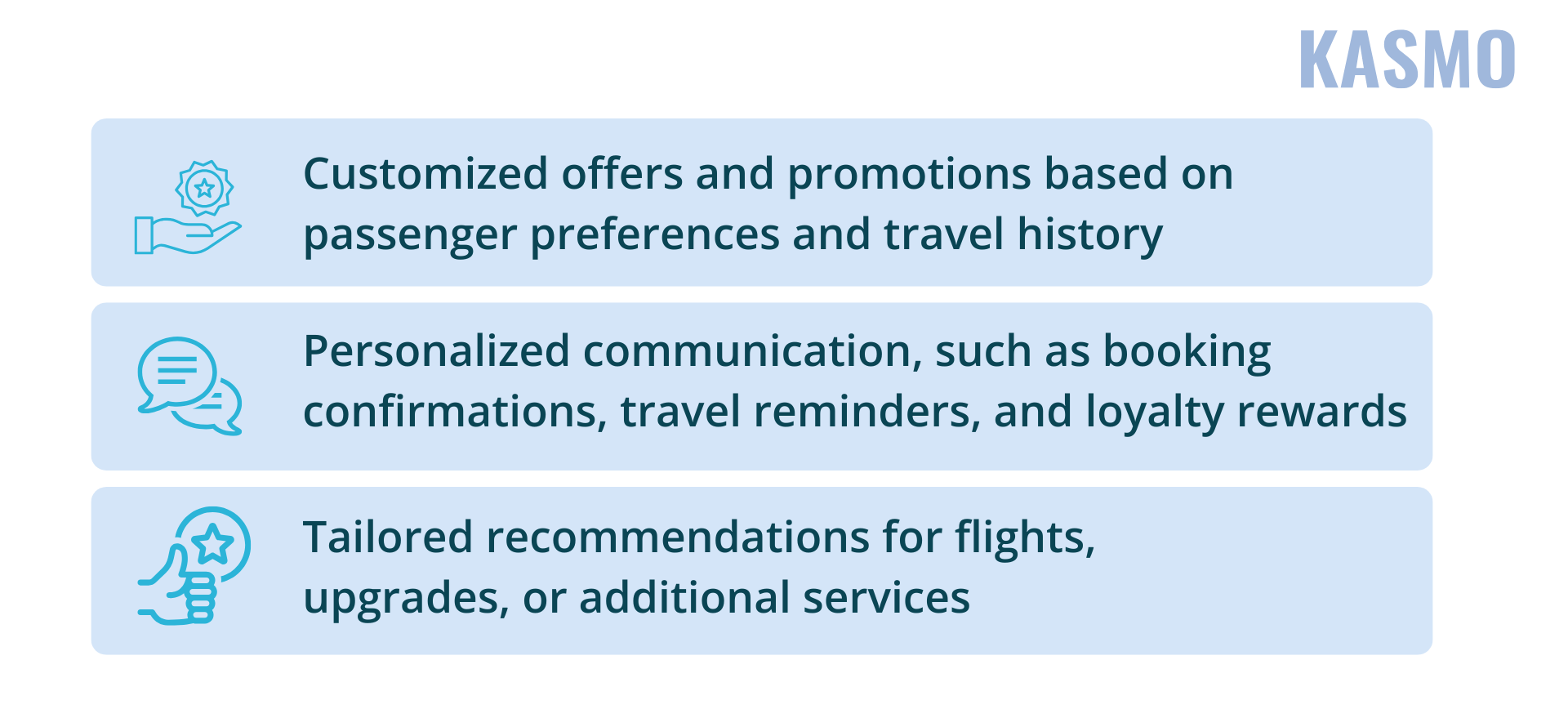
Snowflake’s data-driven insights can also help airlines predict passenger needs and proactively address them. For example, predictive analytics can identify passengers who may require special assistance, helping airlines allocate resources more effectively and ensure a smooth, enjoyable travel experience.
Improving Loyalty Programs and Customer Retention
Customer loyalty is crucial for airlines, especially in a market where passengers have many options for travel. Snowflake’s unified data platform allows airlines to create more comprehensive and data-driven loyalty programs. By analyzing passenger data from loyalty programs, past trips, preferences, and spending behavior, airlines can design more personalized and engaging loyalty initiatives.
Additionally, with Snowflake, you can identify trends in customer behavior, which can help you anticipate when loyalty members are at risk of disengaging. With this insight, airlines can proactively offer personalized incentives to retain customers and drive repeat business, transforming the future of airline industry.
Conclusion
Uncovering the future of airline industry can be easy, if you know how to leverage the right platforms like Snowflake. Making your airline company adaptable to sudden changes and challenges helps you turn them into opportunities. The focus of the airline industry should be now on enhancing convenience, embracing technology, and fostering operational efficiency to meet the needs of a more demanding, tech-savvy customer base.
Whether it’s through investing in digital tools, adjusting business models, or navigating shifting global trends, airlines must stay agile to succeed in an increasingly competitive and complex environment.
